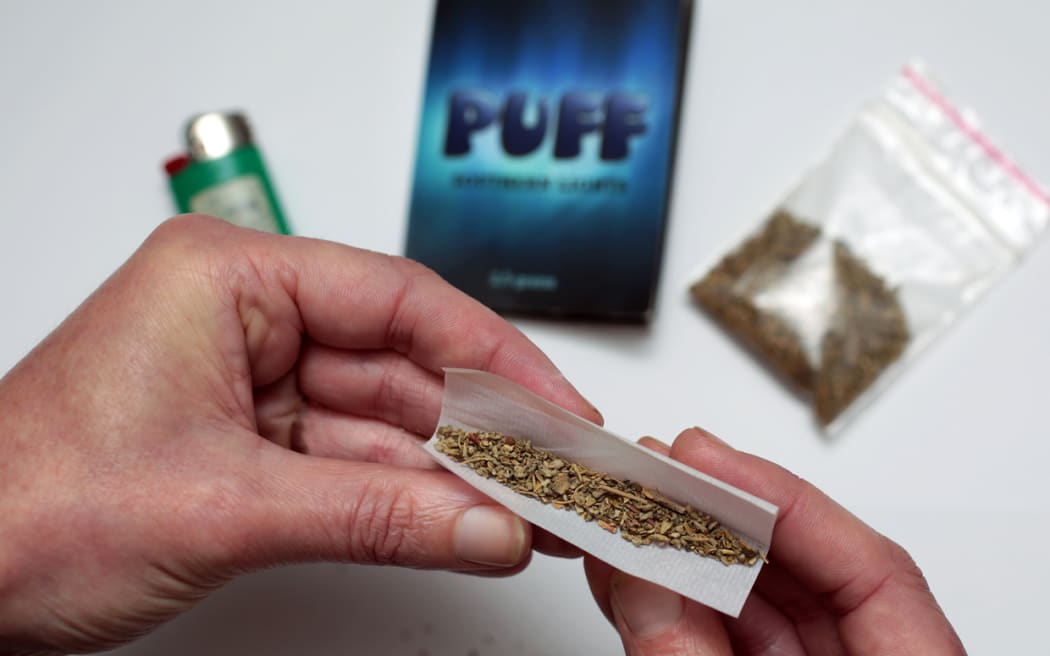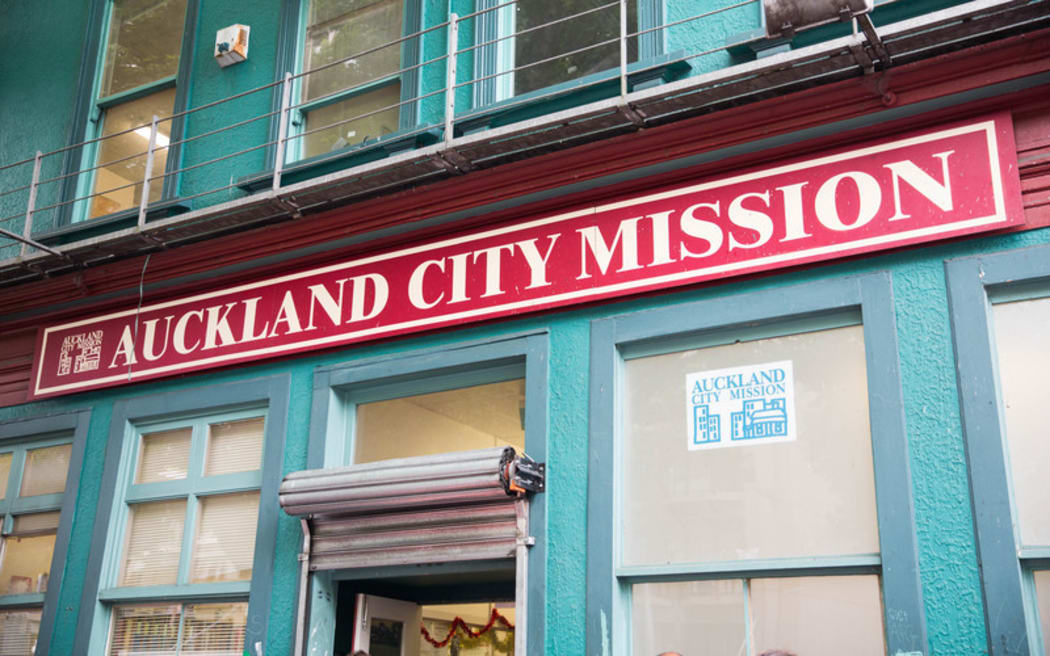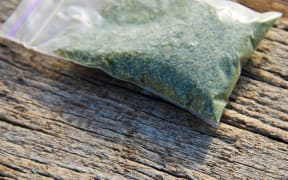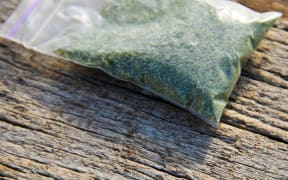Opinion - Something very bad is happening around the group of drugs we refer to as "synthetic cannabis", and it's happening right out in the open. The community worst affected is the one you can see in public - Auckland's street people.

"Synthetic cannabis" is not, and never has been, just one drug - and what's being sold now is different to what was sold when the drugs were legal. Photo: RNZ / Diego Opatowski
Auckland City Missioner Chris Farrelly has confirmed that the mission is seeing violent behaviour in clients who have never been violent before and speculated that synthetic cannabis was being "spiked" with something else.
That's possible. Faced with seven deaths in the past month, some Auckland heath officials have been considering the possibility that fentanyl, the potent synthetic opioid responsible for thousands of overdose deaths in North America and now being manufactured by Mexican cartels, may have arrived on New Zealand streets.
That would be very alarming, but in line with the experience in Canada, where fentanyl has been detected in every recreational drug bar natural cannabis.
But it's important to understand that "synthetic cannabis" is not, and never has been, just one drug.
The drugs briefly permitted for regulated sale under the Psychoactive Substances Act in 2013 were not the same as some of the (generally more benign) drugs that were sold in shops for years - and progressively banned - before the Act.
And whatever is in street "synnies" now is clearly something different to what was sold in 2013.
These chemicals have two things in common. The first is that they're mixed with acetone and sprayed on vegetable material for smoking. The second is that they're all cannabimimetics - that is, they act on the same CB1 and CB2 receptors in the brain as cannabis does.
Not all cannabimetics are bad - technically, paracetamol is one - but the ones sprayed on herbs are full agonists for the receptors. That means their effect is far stronger and less predictable than that of the THC in cannabis.
What we're seeing may well simply be a new and more dangerous cannabimimetic. It's a poorly-understood class of drugs and rapid dependence, unpredictable behaviour and sudden loss of consciousness have all been observed before in "synthetic cannabis" users. It might be a familiar chemical in a far higher dose.
Or it might be something else altogether. We just don't know.

Staff at Auckland's City Mission have reported seeing violence from some clients who have never been violent before, with the behaviour linked to synthetic cannabis. Photo: RNZ / Cole Eastham-Farrelly
But there is one party in a position to find out - the police. Last week's joint statement from the Chief Coroner and police contained lots of arm-waving about how "tests conducted of the synthetic cannabis itself have shown that it can be very dangerous, with the possibility that some products can also be laced with other unknown chemicals".
But the police have access to a place that can almost always identify "unknown" chemicals - ESR. Even if a chemical is so unfamiliar that there is no reference profile in ESR's library, its scientists can still make an informed guess as to its nature.
Two years ago, I interviewed ESR scientists who told me that they were seeing "significantly more" cannabimimetics in testing for police and Customs than they had before the amendment to the Psychoactive Substances Act pre-emptively banned all new psychoactive substances. And they were overwhelmingly chemicals they hadn't seen before, rather than those that had been sold before the ban.
That interview got the scientists in some trouble, because the government's position - and that of the minister, Peter Dunne - was that the only synthetic cannabis products on the black market were those stockpiled from the legal retail period. Clearly, that wasn't true.
So this has been coming for a while - ever since the ban, in fact. We've gone from unregulated sale in dairies, to regulated sale under an Act that was imperfect but at least offered some control over the products, to the open slather of the street.
This isn't going to be easy to fix. This is a class of drugs that isn't really amenable to regulation - and yet, the harm the drugs cause is now far greater than anything that occurred when they were legal and regulated.
Legalising natural cannabis isn't a quick fix either. Perhaps if 10 years ago natural cannabis had been legalised, the synthetic market would never have developed. Perhaps. But in California, where weed is as good as legal, synthetic cannabis products still take a toll - and they take it on the same sector as they do here: the homeless and itinerant.
What would help, for now, is for police to stop being cute and release their test data.
Systems for getting police test results to the doctors who need it have long been poor - and the general public is usually entirely in the dark. That's just not good enough any more.
We are in the midst of an acute public health emergency - one that demands full transparency.
Russell Brown is an Auckland-based journalist for Public Address and drug law reform advocate.



